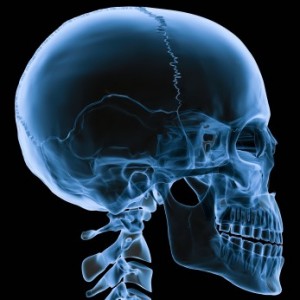
The temporomandibular joint is where the mandible or jaw connects with the skull via the temporal bone. When approaching an analysis of this connection a multimodal approach is necessary. A poor posture with the head sitting to the left or right of the body can cause unilateral shortening of the neck muscles. Posture must, therefore, be addressed along with skull alignment.
If the skull bones are not properly aligned the positioning of the temporomandibular joints can become asymmetrical. The hinge-like joint of the mandible to the skull now no longer moves smoothly. It may just start with a slight grinding sound but no pain.
The skull attempts to center itself over the body but may go into a painful position to do so. This shows up with a painful position of the neck bones and musculature to maintain stability. Because the temporal bones contain the vestibular canals which are responsible for balance, the lop-sided positions of the temporal bones can lead to balance problems.
TMJ and TMD Disorders have hope with Endonasal Cranial Adjusting.
With Endonasal Cranial Adjusting, the entire position of the skull is addressed. The mandible has alignment with the skull and proper chewing patterns are restored. Usually it will be better, but sometimes it can seem worse, especially with bridges, crowns and fillings that are shaped for the mouth of a crooked head.
Dentists and I often work together to ensure that skull alignment and dental work are coordinated to produce a bite that encourages proper skull alignment and vice versa. Rarely dental orthopedics or even orthodontics will be required.
